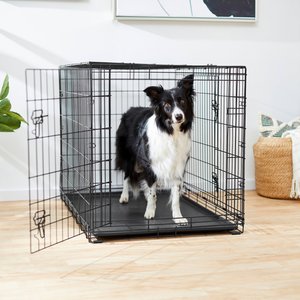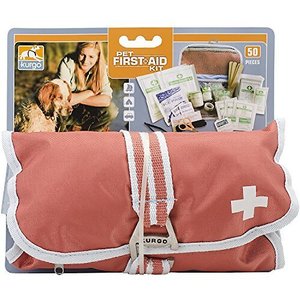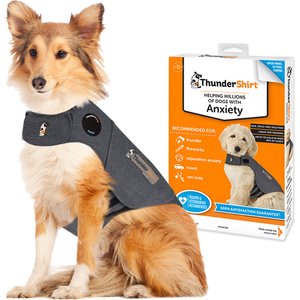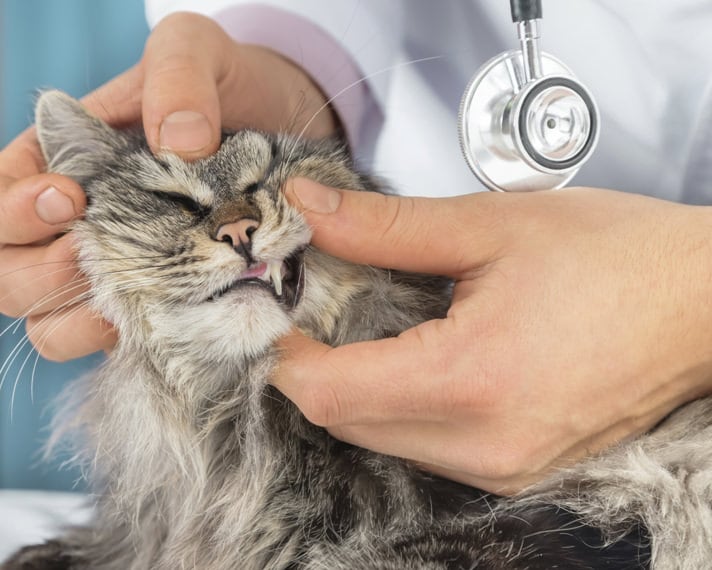Emergencies happen. We do everything we can to prepare ourselves for them—load up on insurance, keep non-perishable rations, prepare emergency escape routes with our families—but have you considered how to prepare for your pet?
“We must plan for our pets in advance for a few reasons,” says Tom Sharp, president and CEO of AKC Reunite, an affiliate of the American Kennel Club and North America’s largest not-for-profit pet ID and recovery service. “First, they can’t plan for themselves, and are dependent on us to help them be safe when disaster strikes. And secondly, many people will not evacuate if they cannot take their pets with them, so it is helpful for the pet owners to have a plan.”
Pet parents should always have a disaster plan in place. Here are some tips from Sharp:
1. Have an emergency kit ready.
Sharp recommends packing a portable and waterproof tote with emergency supplies and provisions that you can easily access from your home or grab and go if you need to evacuate. Include the following:
• Food, water and meds: Fill waterproof containers with a week’s supply of food and two weeks worth of medications. “Remember drinking water, too,” says Sharp. You might also consider something to help alleviate pet stress, like VetriScience Composure Behavioral Health Bite-Sized Dog Chews or Vetoquinol Zylkene Behavior Support Capsules for small dogs and cats. Be sure to check with your vet before using any of these kinds of products.
• Necessary supplies: This includes bowls, extra leashes and collapsible carriers or crates (the Frisco Fold & Carry Double Door Dog Crate is a great option), as well as cat litter boxes, a manual can opener and your pet’s favorite toy or treats. No disaster plan is complete, after all, without something to help soothe your worried furry best friend.
• Organized information on your pet: Keep in your pet emergency kit a photo and description of your pet, along with any proof of ownership. Include your updated address and telephone number. Have your microchip number handy (you can verify your pet’s microchip enrollment information with AKC Reunite at 1-800-252-7894), veterinarian contact information along with your pet’s medical and/or insurance records, as well as feeding schedule information.
• An easily readable map: Highlight potential evacuation routes for ease of use.
• Blanket, flashlight and batteries
• First aid kit: A first aid kit is a helpful tool for both humans and pets, reminds Sharp. The Kurgo Pet First Aid Kit should have everything you’ll need for your pet.
2. Review the materials in your pet emergency kit and all disaster plans on a regular basis to keep them up to date.
This includes checking expiration dates on your emergency supplies, making sure you’ve packed seasonally appropriate materials, and checking planned evacuation routes for any changes due to construction or other reasons. Confirm that your pet’s microchip record is current and assess your flashlights, batteries, drinking water, emergency gasoline, blankets and non-perishable food items, says Sharp. Additional pet products like the ThunderShirt Anxiety & Calming Solution may help calm an anxious pup, too.
3. Always plan to keep your pet with you.
“The safest place for your pet to be is with you,” says Sharp. To that end, Sharp recommends ensuring all pets are wearing collars with securely fastened, up-to-date identification; checking that your pet emergency kit is accessible and ready to go at a moment’s notice; and calling ahead to confirm emergency shelter arrangements for you and your pets. If a hotel is part of your disaster plan, be sure you’ve called ahead to verify that your pet is welcome, too.
If things are getting dicey or bad weather is on the way, Sharp also recommends bringing your pets inside immediately so you won’t have to search for them if you need to evacuate quickly. If you do end up needing to evacuate, “never leave your pet at home,” says Sharp. “Most evacuations last only a few days, but sometimes you may not be able to return to your home quickly. Your pet should wear a collar with their rabies tag and identification at all times, and have a sturdy craft or carrier for transport.”
Share:














